Most popular types
We can distinguish many types of honey depending on the plants from which the bees bring the honey to the hive. Each of them has a different flavor, color, and health effect on our body. It is worth introducing honey to the daily menu. Real honey has a lot of calories and is sweeter, so just a little to sweeten your life and at the same time add many valuable ingredients to your body.
there are more than 300 types of honey that exist today and with each one boasting of special set of health and nutritional benefits, Honey lovers are in for a sweet time.
Different types of honey are categorized by the flower source, but did you know that even if it was extracted from the same flower in the same location, its taste could still differ by a huge margin? That is because of the difference in temperature or rainfall level. Also, lighter colored Honey tends to be milder in taste as compared to the darker ones.
Honey contain 80 percent of simple sugars (fructose and glucose). Therefore, the question may arise as to whether honey is healthy? Just look at its other ingredients, i.e., potassium, phosphorus, magnesium, calcium, iron, chlorine, molybdenum, manganese, and cobalt. There are also vitamins – mainly C, B group, biotin, folic acid, and pantothenic acid. All this makes honey work, among others cleansing, anti-inflammatory and antibacterial. It strengthens the body and protects the respiratory system against colds, throat diseases and sinusitis. It also supports the work of the heart and is helpful, among others in the treatment of coronary artery disease and atherosclerosis. Honey also heals stomach and duodenal ulcers. It helps with inflammation of the intestines, liver diseases and has anti-diarrheal properties. At the same time, it fights constipation and improves digestive processes. But that’s not it. Honey is recommended for people who suffer from urinary tract diseases, including inflammation of the kidneys or bladder. In addition, it is worth eating it in case of insomnia and nervousness, as honey has a calming effect.
Do you want to know more about honey? Not sure which variety to choose? How to store the honey in question? Below you will find some compact information about each type of honey, and they use and benefits …

How to distinguish between natural and artificial honey?
Many people wonder how to distinguish natural honey from artificial honey, which is especially important when we do not have access to a proven beekeeper, and we buy honey in supermarkets. So how do you check if we have been deceived?
When checking whether we are dealing with real or artificial honey, we need to look at the taste, appearance, weight, and reaction of the liquid honey, but also the price.
Taste
Natural honey is sweet after tasting, but after a while we can feel a slight burning sensation in the mouth and a scratching throat. This is due to the release of natural honey aromas, which prove that we are dealing with real honey.
Appearance
In terms of appearance, at first glance, artificial honey does not differ much from natural honey, so it is worth conducting a short test. If honey poured onto a teaspoon forms a cone, it is natural honey. In contrast, artificial honey flows into a homogeneous consistency. Until recently, we were able to check the naturalness of honey in terms of whether a given honey crystallizes or not. Nowadays, the crystallization test may fail a bit, but it is known that natural honey crystallizes much faster than artificial honey.
The weight
It is established that the weight of a 33.81fl oz ( 1 liter) jar of natural honey should not fall below 3.086 lb. (1.4 kg.).
Reaction in water
The easiest way to test honey for naturalness is in cold water. If a teaspoon of honey placed in a glass of cold water has difficulty dissolving and creates clear streaks, it means that we have purchased natural honey. Artificial honey then dissolves instantly.
How to store honey?
Honey is one of those food ingredients that can be stored for a very long time. However, it is enough to take care of a few aspects that will make our honey retain its properties and taste for a long time. Honey does not like direct sunlight and air. Therefore, it is worth keeping it in a slightly darkened place, in a tightly closed container (glass jars are so far the best). However, the ambient temperature is very important in the storage of honey. The most optimal temperature for honey is between 46.4 – 50 F degrees (8-10 C degrees). It is worth knowing that honey stored at a temperature of about 32 F degrees ( 0 C degrees) will crystallize more slowly – however, this is a natural process that should not be stopped, because it does not change the properties of honey, but only its appearance and consistency.
******OH HONEY, HONEY*****
Honeydew honey
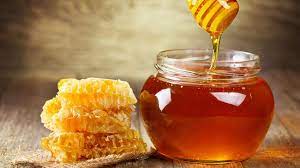
Honeydew honey is a honey that is not made of the nectar of flowers. It is formed from the sticky and sweet discharge, the sap , on the leaves of trees (sap of some trees, incl. spruce, fir, pine, larch, maple, oak, birch, beech, willow, hawthorn) in the form of droplets. It has antiseptic, anti-inflammatory, and expectorant properties, which is why it is good for colds and more serious diseases, e.g., pneumonia. It also helps in cardiovascular diseases and has a positive effect on the heart thanks to its antiatherosclerosis properties. It has a beneficial effect on the nervous system and joint diseases. It has detoxifying properties and is effective in the treatment of anemia, asthma, kidney stones, regulates metabolism and has anti-cancer properties. It is also recommended by dentists because it prevents the formation of tartar. Its color is almost black, and after crystallization, depending on whether it is a leaf or coniferous honeydew, it can be dark brown or light brown. Honeydew honeys have a mild and delicate aroma and a specific taste, that not everyone will like. The fall of conifers is mild, sweet, slightly resinous Flower of origin
Multi-Flower Honey
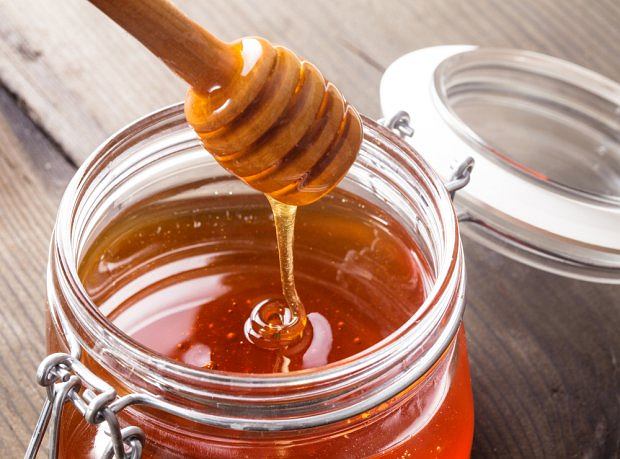
It is one of the most popular honeys. Multiflowered is a mixture of nectars collected by bees from various types of trees, flowers, and crops. In the liquid state, it is light cream to tea color, after crystallization it turns into light gray or light brown. It is used as a natural antibiotic to inhibit the growth of unwanted bacteria. It works in the prevention of heart disease, liver problems and the functioning of the digestive system. It is definitely less caloric than other honeys. It prevents tooth decay and strengthens the immune system. The scent of multiflorous honey is usually strong, reminiscent of wax. The taste is very diverse, depending on the composition of the nectar, but generally it is mild and sweet. It has beautifying properties; therefore, it is often used in cosmetics. Let honey become an additional valuable component of our diet from today.
Buckwheat honey

It is obtained by bees from buckwheat nectar. It is one of the darkest honeys – its color ranges from dark brown to almost black. It is characterized by high antibiotic activity. It is used in the prevention and treatment of cardiovascular diseases, especially those related to atherosclerosis. Accelerates wound healing. It also contains a lot of magnesium, thanks to which it has calming properties and soothes states of excessive nervous tension. It is recommended for people with anemia and weakness of the organism because it contains iron and a lot of vitamin C.
Rapeseed honey
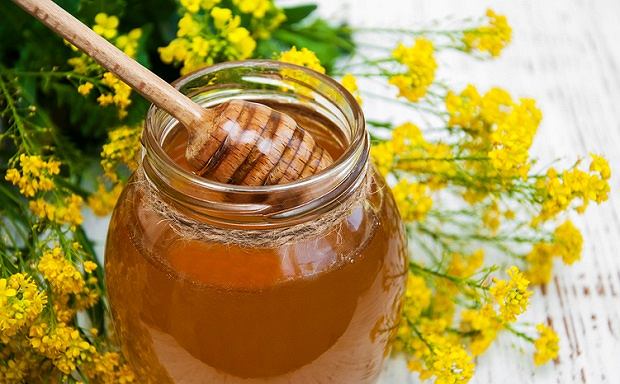
It is obtained by bees from the nectar and pollen of flowering rape plant. Due to the common crop cultivation, it is one of the cheapest honeys. It has a very pale straw color and almost white after crystallization. It contains, among others, magnesium, boron, iron, and potassium. Affects the widening of the coronary vessels and prevents hypertension. The high glucose content makes rapeseed honey an ideal source of well-absorbed energy for people with a lot of mental and physical exertion, as well as for convalescents. Due to the high glucose content, people with diabetes should limit it. Rapeseed honey can also be used externally in skin diseases and burns.
Acacia honey
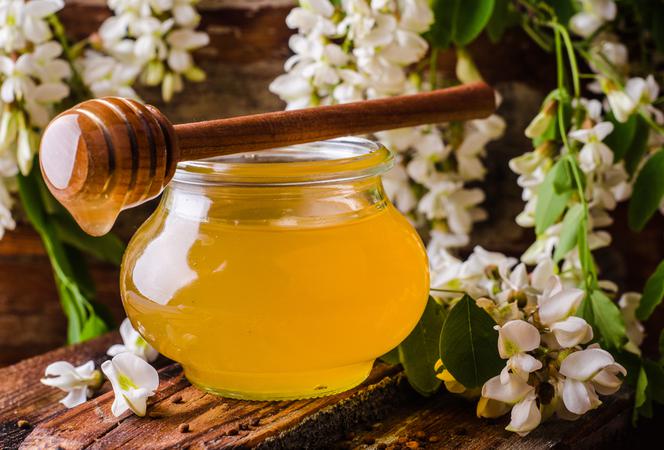
It is light cream to transparent. It is produced by bees during the flowering of the black locust. It is the sweetest of all honeys and is therefore very popular with children. It nourishes and regenerates our body in states of mental and physical fatigue. It is also valued as an adjuvant in the treatment of inflammation of the upper respiratory tract, especially acute and choking cough, kidney diseases, gastric ulcer, and urinary tract ulcer disease. It also has a calming effect.
Manuka Honey
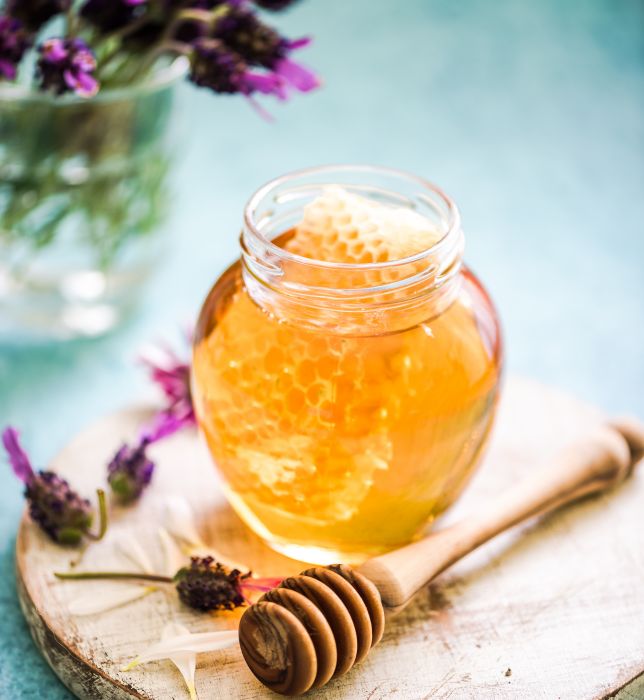
Manuka honey is the most expensive and valued honey. It comes from tea bushes growing in Australia and New Zealand. Real Manuka honey is dark brown in color, with a thick and smooth texture, and the taste is slightly earthy, somewhat reminiscent of heather honey.
The manuka shrub leaves infusion supports the immune system, and additionally protects the digestive system, supports the treatment of painful ulcers and gastritis. Manuka leaf juice, which has antibacterial and antifungal properties, can be used as a wound dressing, as it significantly speeds up wound healing, relieves pain and makes swelling disappear faster.
Alfalfa Honey
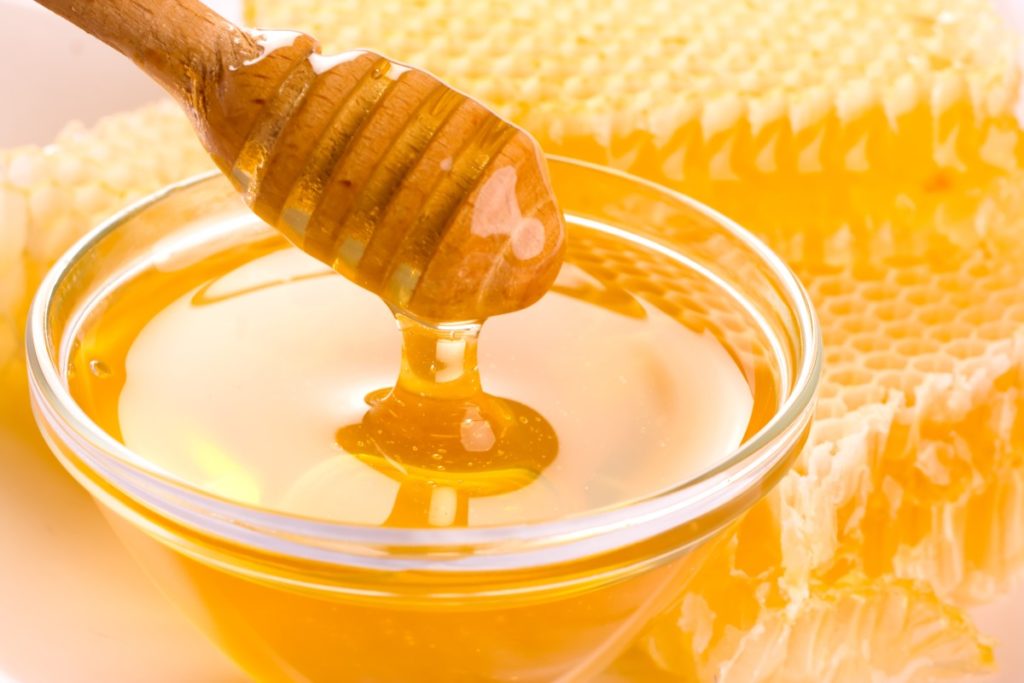
Alfalfa honey is majorly produced in Canada and the United States. Made from the purple or blue blossoms, it is light in color and has a mild floral aroma and taste. Due to its sweet yet mild taste, Alfalfa honey is often used in the kitchen for baking . It works best when combined with other ingredients like tea, lemonade, and milkshakes among others.
Aster Honey
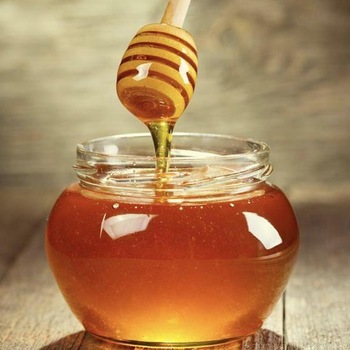
This light-colored honey is mainly extracted from flowers in the Mid-South region of the United States. Aster Honey has a thick and smooth consistency. That is accompanied by a distinctively sweet smell. It tends to crystallize faster than most other variety of Honey available and tastes best when used as a natural sweeter in a variety of sweet drinks and desserts.
Linden/Lime honey
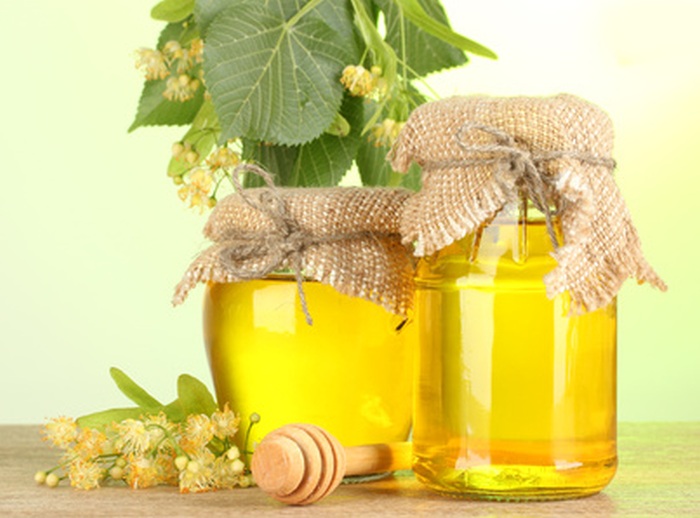
It is obtained by bees from the nectar of small-leaved and broad-leaved linden. It has high antibiotic activity and helps in acute and chronic cold diseases, angina, sinusitis, bronchitis, urinary tract diseases, rheumatic diseases, neurosis, and problems with falling asleep and in situations of long and severe stress.
Heather honey
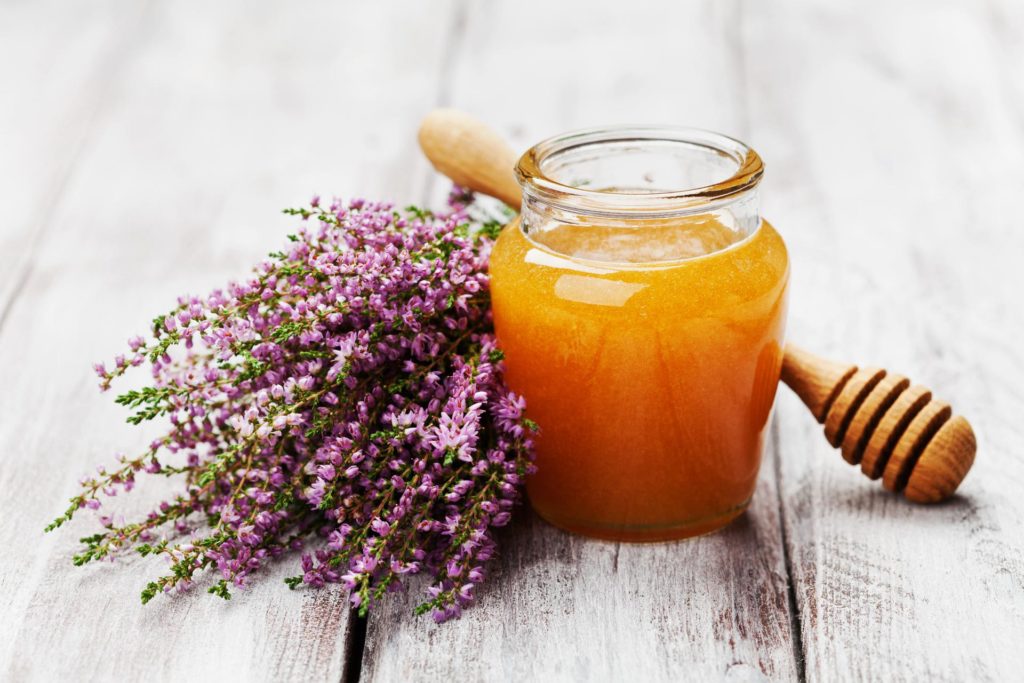
It has an amazing smell and taste thanks to essential oils. It works well as a medicine for colds. It inhibits the spread of viruses and bacteria in the body. It has warming properties; it is recommended in flu states. It works great in diseases of the eyes, gastrointestinal tract, heart, and circulatory system. Two teaspoons of honey a day, consumed in many ways, are enough to see the results after a few weeks. Thanks to its beautifying and smoothing properties, it is used in cosmetics.
Crystal Honey

Real cornflower honey is harvested from a plant that is widely fought by farmers; therefore, it can only be obtained on apiaries located in the area of organic farming. Cornflower honey is greenish yellow in color and has an intense flavor that remains in the mouth long after consumption (similar to heather honey). The smell also strongly emphasizes the origin of the honey, because after the first opening of the jar, you can smell the scent characteristic of cornflower. It has number of benefits. It is a valuable medicinal plant with anti-inflammatory and diuretic properties, used to alleviate the symptoms of many skin diseases (ulcers, mycoses, dandruff), some eye diseases and diseases of the kidneys and urinary system (e.g., kidney stones, cystitis).
Sunflower honey

It is one of the less common honeys. It is obtained from the nectar of sunflower, an annual plant with large flowers.
Sunflower honey helps in the treatment of cardiovascular diseases, liver, and inflammation of the upper respiratory tract, so it can be used during colds. This honey is also effective in the fight against skin diseases. It also has a very positive effect on the stomach and intestines. Therefore, it can be used in the case of digestive system diseases. Sunflower honey also lowers blood pressure, prevents atherosclerosis, and improves oxygenation of the heart. Moreover, it regulates potassium deficiencies. Its next remarkable property is its antibacterial and anti-inflammatory properties.
Meadow Honey
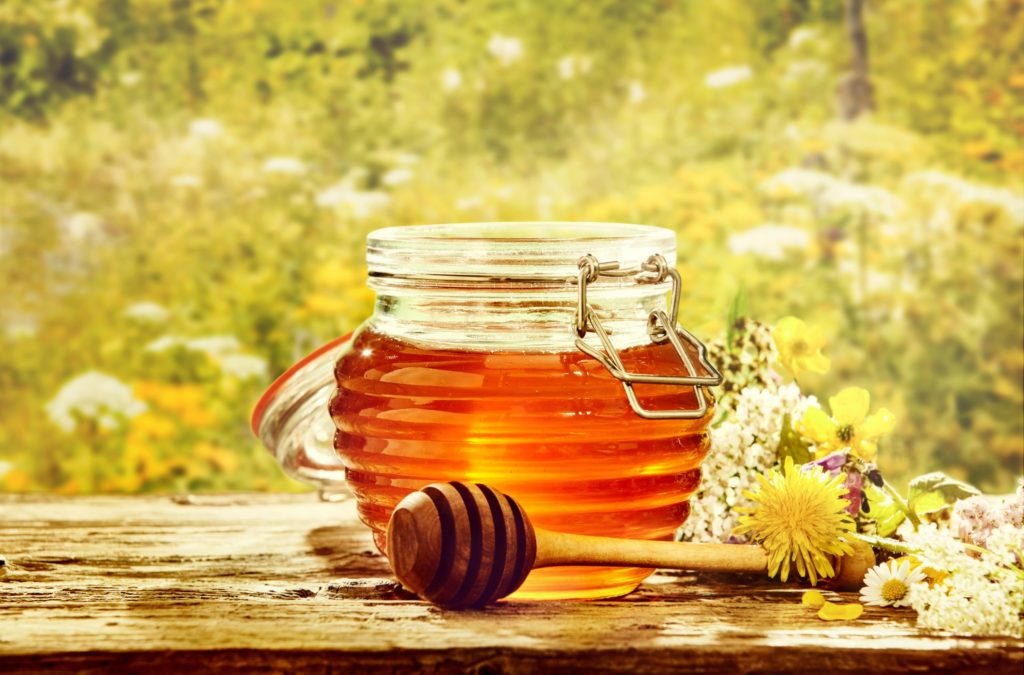
Meadows are located in a variety of environments. These include alpine meadows, located in the mountains at high elevations, coastal meadows that are sustained by saltwater sprays, desert meadows, prairies, and wet meadows. Any of these meadows may support a colony of honeybees if there are enough plants to provide a sufficient amount of nectar. As other raw types of honey, this one is very valuable and have lots of healing properties: Healing Wounds and Burns, Reducing the Duration of Diarrhea, Preventing Acid Reflux, Fighting Infections, relieving cold and cough symptoms, Rich in Antioxidants, Can Lower Triglycerides.
Ironbark Honey
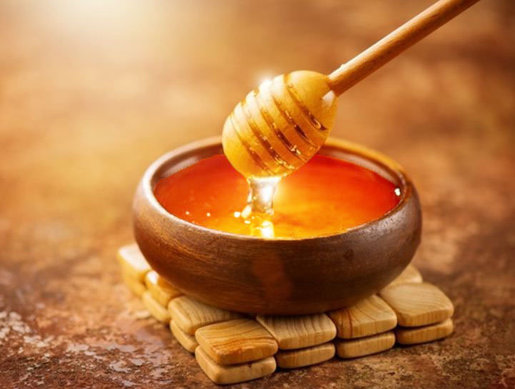
Another floral variety of eucalyptus, with a bold taste. Iron Bark Honey is extracted from the blossoms throughout the year in eastern Australia. A favorite flavor catalyst for baking and barbecued meats. Ironbark Honey’s amber color and dense texture adds a decadent taste to smoothies as well as other sweet drinks and shakes.
Jarrah Honey
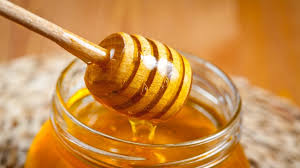
Jarrah is a dark- amber eucalyptus variety of honey that has a caramel aftertaste. Jarrah Honey has been scientifically researched to find out that Jarrah is an effective remedy for wounds, burns and skin allergies due to the higher percentage of activity level than most of the honey variety available in the market.
Leatherwood Honey
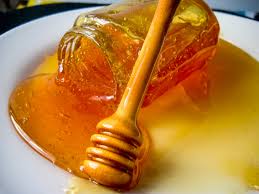
Leatherwood Honey comes from the Leatherwood blossom in the south-west region of Tasmania, Australia. Leatherwood Honey is known for its unique taste and strong flavor. Also, commonly known as Tasmanian Honey, it has established itself as an irreplaceable ingredient that not only sweetens but also adds an excellent flavor to cakes, muffins, coffee, and tea.
Facial Honey
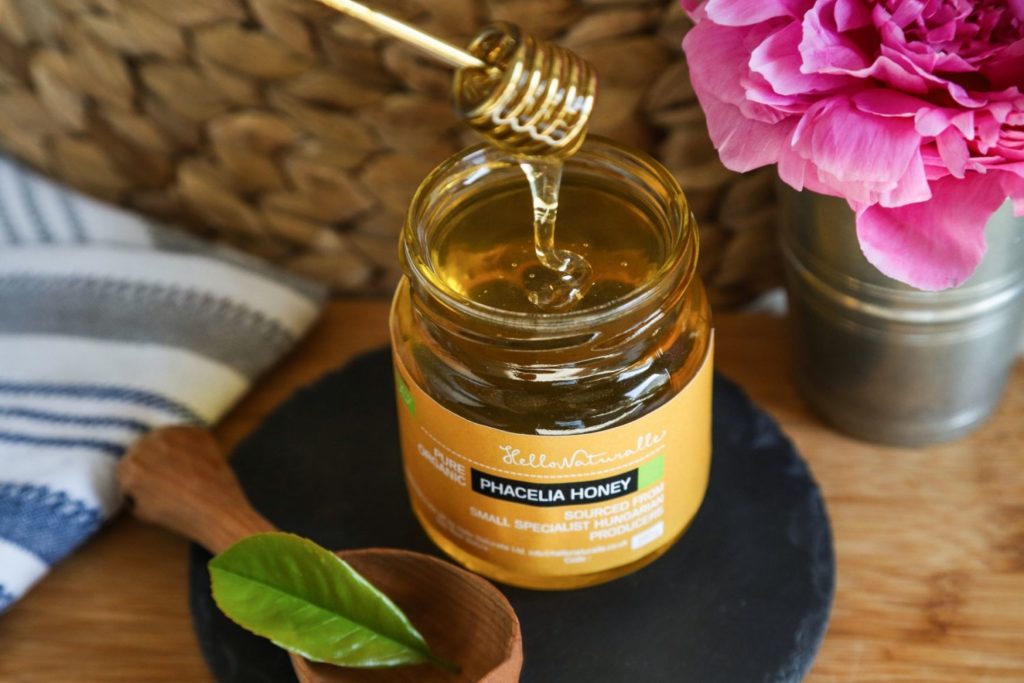
Phacelia honey is very pleasant to the taste, delicate, slightly acidic. Its fragrance is very pleasant and highly floral. It is light yellow or greenish in color, and after crystallization, the honey acquires a dark yellow or even brown shade. Phacelia lowers blood pressure, strengthens immunity, and prevents infections of the upper respiratory tract, has an antiseptic effect.
Clover honey

It is made by bees from the nectar of white and red clover. It is aromatic, mild and has a sour taste. The liquid state is straw-yellow or salmon-colored. It crystallizes slowly, taking on a thick, fine-grained consistency. It has an expectorant, diaphoretic, anti-inflammatory, and diuretic effect. It is effective in urinary retention, in the treatment of diarrhea, gastrointestinal disorders, bronchitis and nervous exhaustion. Due to the high content of fructose, it is recommended for diabetes
Macadamia Nut Honey
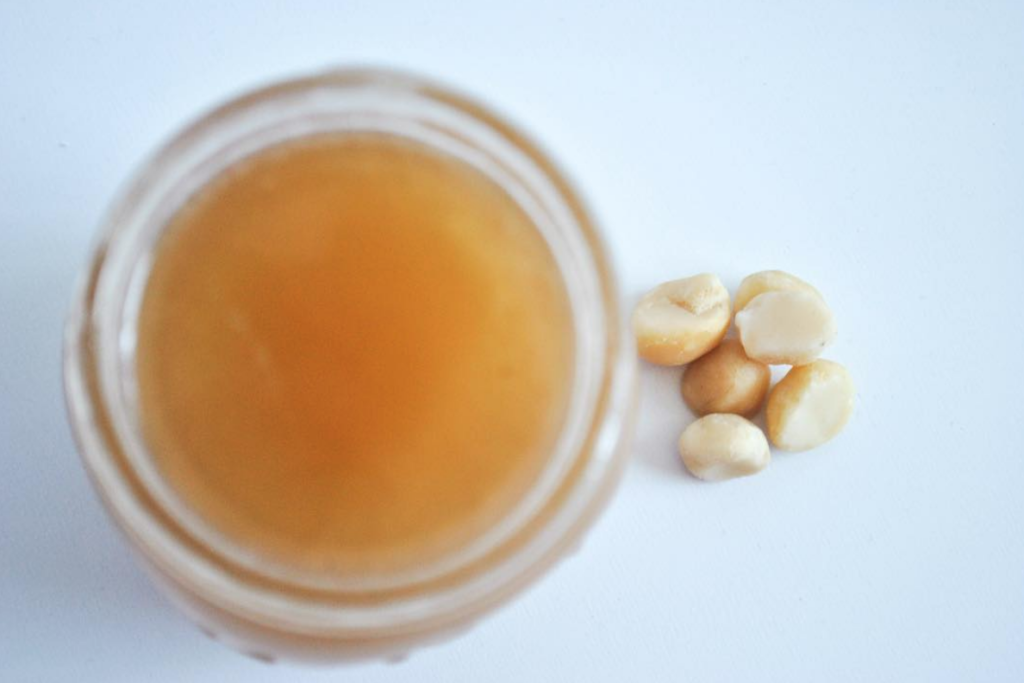
Native to the islands of Hawaii. The macadamia nut blossom produces a floral and nutty honey with a dark amber color and smooth liquid texture. The best reason to make a special effort to find and sample macadamia nut honey, though, is the fact that it’s so yummy, and tastes like no other honey you’ve ever
Melilot honey
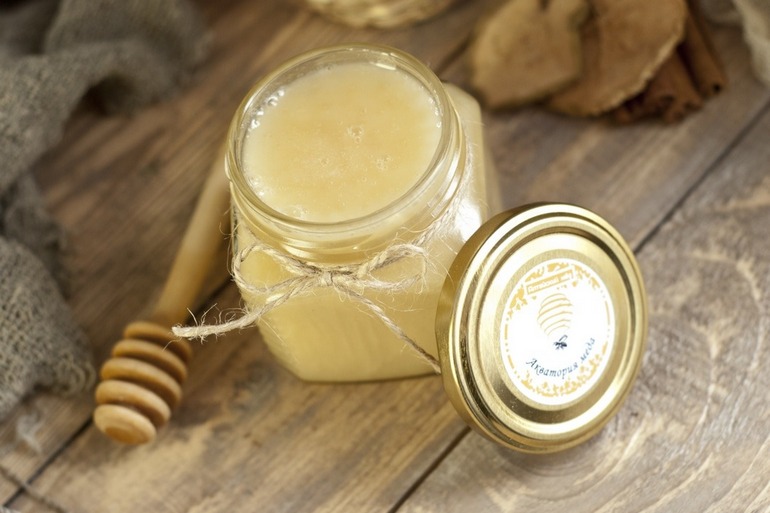
with a slight vanilla odor, it has a light color. When crystallized, it becomes even brighter or yellow. It contains coumarin, which lowers blood pressure. Honey has a calming and hypnotic effect. Recommended for heart neurosis and other diseases of the heart and blood vessels. It prevents the degeneration of the heart muscle due to atherosclerosis and thrombophlebitis. It has the effect of reducing blood clotting, lowers blood pressure and has an anticoagulant effect. It is recommended as an antispasmodic in coronary heart disease and coronary thrombosis. It can also be recommended for insomnia, migraine, neuralgia, and climacteric syndrome.
Basswood Honey
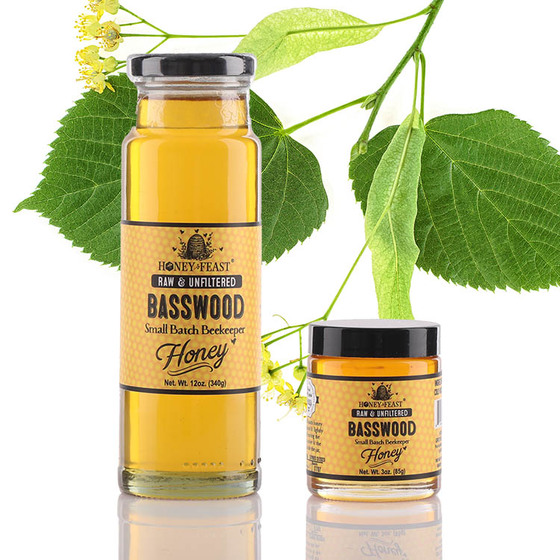
It is produced from the cream-colored Basswood blossoms growing largely throughout North America. This honey most popular for its biting taste, distinctive white color. It has an amazing mellow taste. It’s fresh, pleasant, and wood-like essence tastes incredibly well with a variety of teas. It also great addition to salad dressings and marinades.
Beechwood Honey
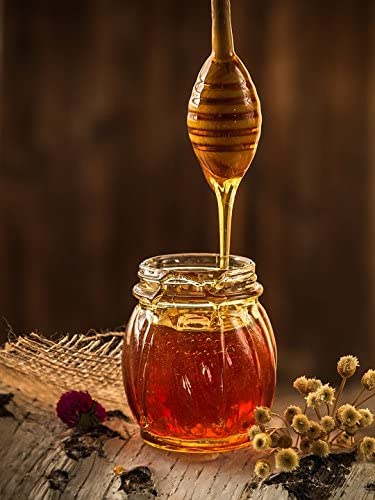
It is sourced from New Zealand’s South Island. It comes from the sap produced by aphids on the bark of the Beechwood tree and later collected by the bees. Beechwood Honey is widely used as syrup for pancakes and fruit salads due to its aromatic properties.
Pine tree Honey
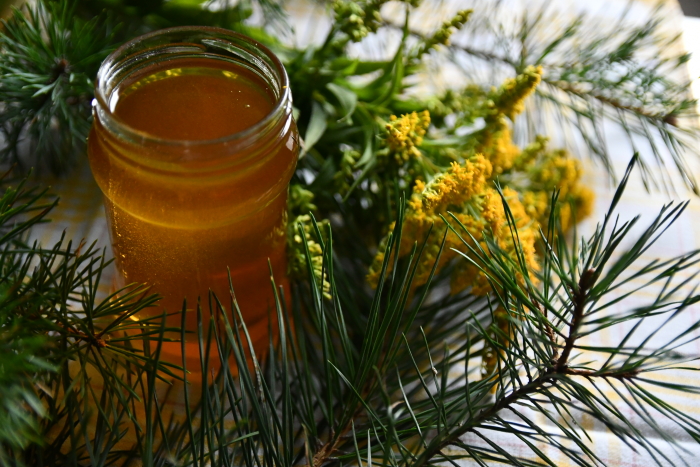
Pinetree Honey mainly comes from Greece. Quite different from the usual sweet taste of honey, Pinetree Honey has a slightly bitter taste with a strong aroma. It contains very high levels of minerals and proteins.
Borage honey
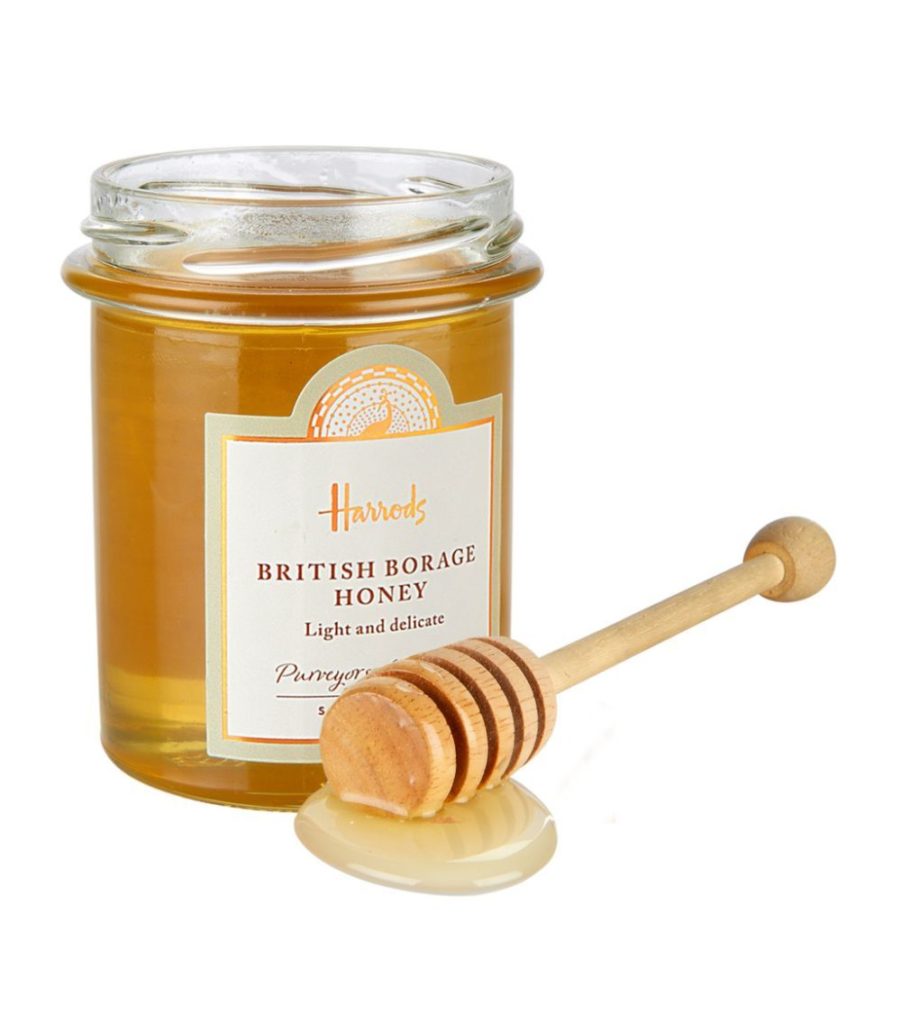
Borage flowers are found in nature, among others in the Mediterranean, Asia Minor, Australia, and New Zealand. Honey obtained from them has a light-yellow color and a delicate flavor. Borage helps fight high cholesterol, abnormal liver, and kidney function. It is diuretic and stimulating because it increases the production of adrenaline. Like most honey, it also helps with infections as it reduces fever and inflammation.
Forest honey
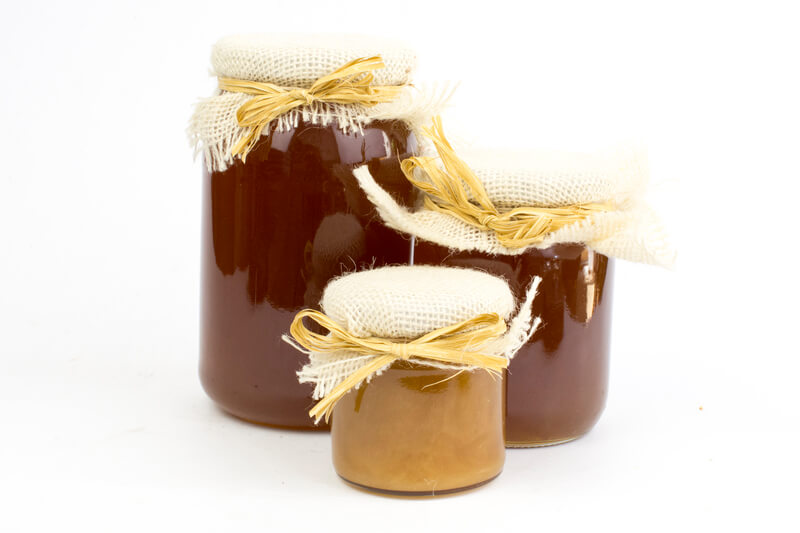
It is classified as nectar of honeydew honeys. It is one of the less sweet honeys It is made of both flower nectar and coniferous or deciduous honeydew. That’s why it is called “2-in-1” honey. Depending on the time of harvest, liquid forest honey can varies from very dark through light up to dark amber in color. With the crystallization process and the passage of time, forest honey acquires a slightly paler color. In the taste and smell of such honey, there is an aroma of forest flowers (blueberry, rosehip, raspberry, chamomile, etc.), as well as resin. All this gives forest honey a very intense herbal aroma and a delicate honey flavor at the same time.
This specific honey is rich in a number of vitamins and minerals, such as potassium, phosphorus, calcium, iron, manganese, and many others. In addition, forest honey, due to its protein content, has a bactericidal effect, and the content of antioxidants has anti-cancer properties.
Palmetto Honey

Palmetto Honey is truly the favorite among beekeepers all over the world. It is known for its dark amber hue, rich texture and smokey flavor. This magnificent honey boasts extra sweet health benefits. Palmetto honey is slow to crystallize because of its high fructose content. It is packed with enzymes, antioxidants, vitamins, acids, and phytonutrients, making it good for our digestive and immune systems.
Thyme Honey
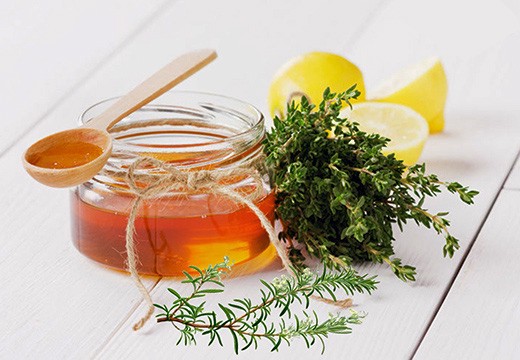
Thyme honey, thanks to the high content of essential oils, has a very intense aroma with a spicy note, which may make the taste appear slightly less sweet. Its taste is distinctive. Immediately after honey picking, the honey has a ruby-amber color, and after crystallization, it changes it to orange-brown or lighter.
The rich chemical composition of thyme makes it expectorant, antibacterial, diastolic, diaphoretic, anti-inflammatory, strengthening and calming. Especially useful for people struggling with persistent cough, sore throat, digestive system ailments, lack of appetite and infections.
Lychee Honey
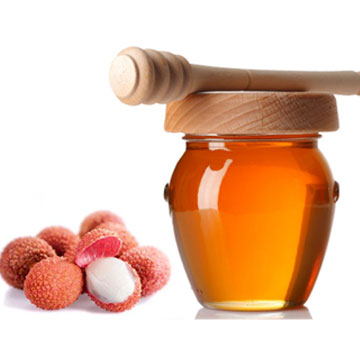
Small, exotic fruit with a distinctive taste l. It may come as a surprise that’s its flowers also produce light-colored honey, rich in proteins and minerals. It is worth reaching for in case of digestive problems because it contains amylases, i.e., enzymes that support the breakdown of starch and polysaccharides. Lychee honey is produced almost exclusively, in Madagascar.
Tupelo Honey
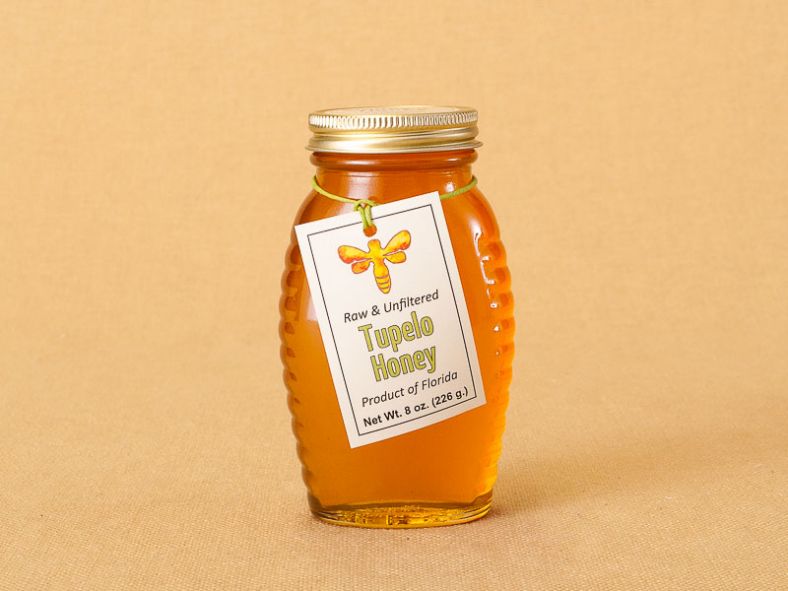
It’s also one of the mildest and most expensive honeys in the world. It is produced in Florida’s and Georgia’s remote swamps. Over there , it’s available for harvest, only during a short season of availability requires special equipment and a lot of labor, which translates to its high cost. Tupelo honey has a very distinctive light amber color with green undertones. It has as well high fructose content that makes it so sweet and buttery, giving it at the same time a very long shelf life before crystallizing.
Honey from Pitcairn Island
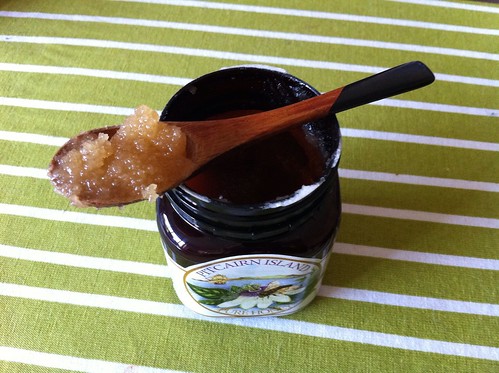
This truly unique multiflorous honey is made from pollen of plants growing on the island in the region of Australia and New Zealand. The amazingly tasting composition includes, among others: flowers of mango, pear and apple rose. The fact that it is created by local bees ( because the local law prohibits bringing them to the island), guarantee its uniqueness. Honey from Pitcairn Island helps in the treatment of throat diseases, infections, ulcers, and skin diseases such as ecchymosis and burns.
Avocado honey
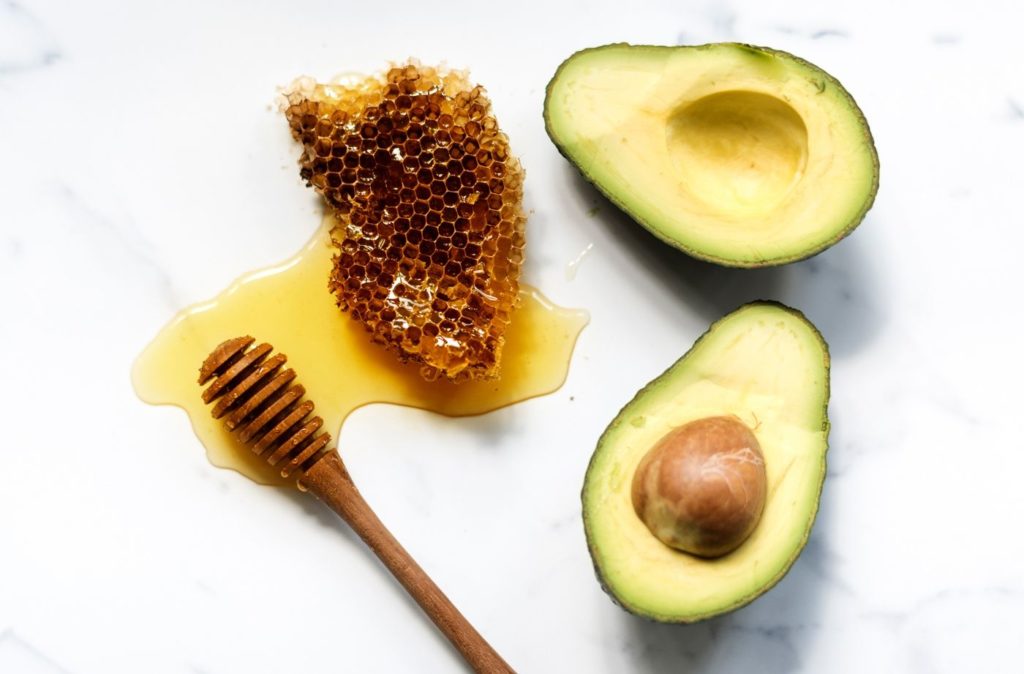
First of all, avocado honey doesn’t taste like avocados, even though it’s made from the nectar of avocado blossoms. Its texture is somewhat like mashed avocado, but the honey is dark amber in color with a buttery, rich taste that’s great for baking. Avocado honey is a strong antibacterial and is often used as a skin moisturizer ( in combination with other ingredients). It’s also used at times to help those with anemia. We all know the benefits of avocados, and the honey from its flowers is rich in antioxidants, vitamins, and minerals. It is recommended, among others, to soothe burn wounds. Avocado honey comes from Spain.
Maple Honey

Maple honey is spring honey, which in liquid form is characterized by a dark color, and after crystallization it becomes light cream, almost white. The taste is very mild, delicate, fine-grained, slightly reminiscent of maple syrup with a hint of caramel.
Maple is a powerful tree in spring, which produces abundant sap, which is rich in vitamins, minerals, and sugar. It has a cleansing and toning effect, as well as strengthens immunity, while maple bark has antiseptic, astringent, and antifungal properties.
Lavender Honey

Lavender honey is one with the highest quality. It is obtained from the nectar collected by bees from the tiny blue-violet flowers of narrow-leaved lavender. Its color is light cream, light yellow or golden. It has a subtle aroma of lavender flowers, and in its intense aroma you can feel a hint of bitterness. Its intense spicy flavor stays in the mouth for a long time.
Lavender has a very wide range of applications. It prevents the excessive development of bacterial flora, has anesthetic and sedative properties, has a bactericidal and fungicidal effect, increases peristaltic movements of the intestines, and prevents flatulence.
Sourwood Honey
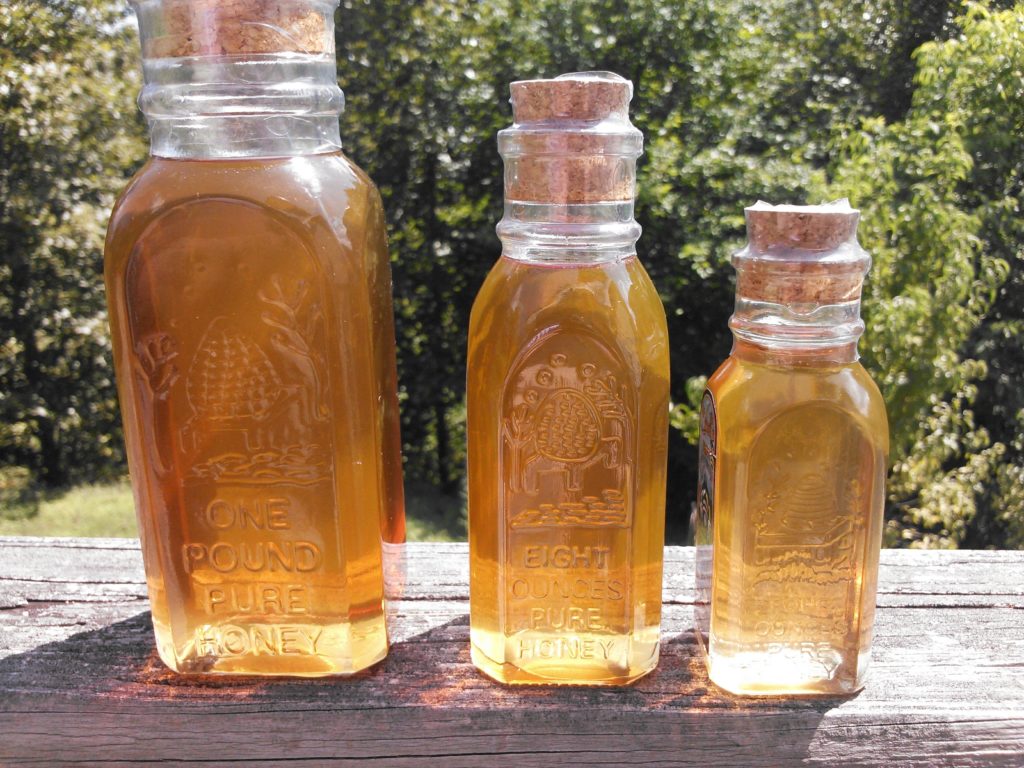
It takes its name from the sourwood trees of the Southeast and Midwestern United States. This honey has a sweet ( not sour at all), buttery, slightly spicy taste that will remind you of caramel. Very pleasant aftertaste, with a beautiful and rich amber color.
The health benefits of sourwood honey are similar to other varieties without specific healing properties: it’s a good antioxidant and anti-inflammatory that can help maintain overall well-being. And like wildflower honey, it’s believed to help fight allergy symptoms.
Sage Honey

The majority of sage honey comes from California, even thou it’s widely available everywhere. It has light-to-moderate coloring. It is very mellow honey that crystallizes very slowly. That’s the reason behind, many commercial bottlers blend it with other varieties to prevent them from solidifying too quickly. It is believed to be good for digestion, in addition to its natural antioxidant properties.
Eucalyptus Honey
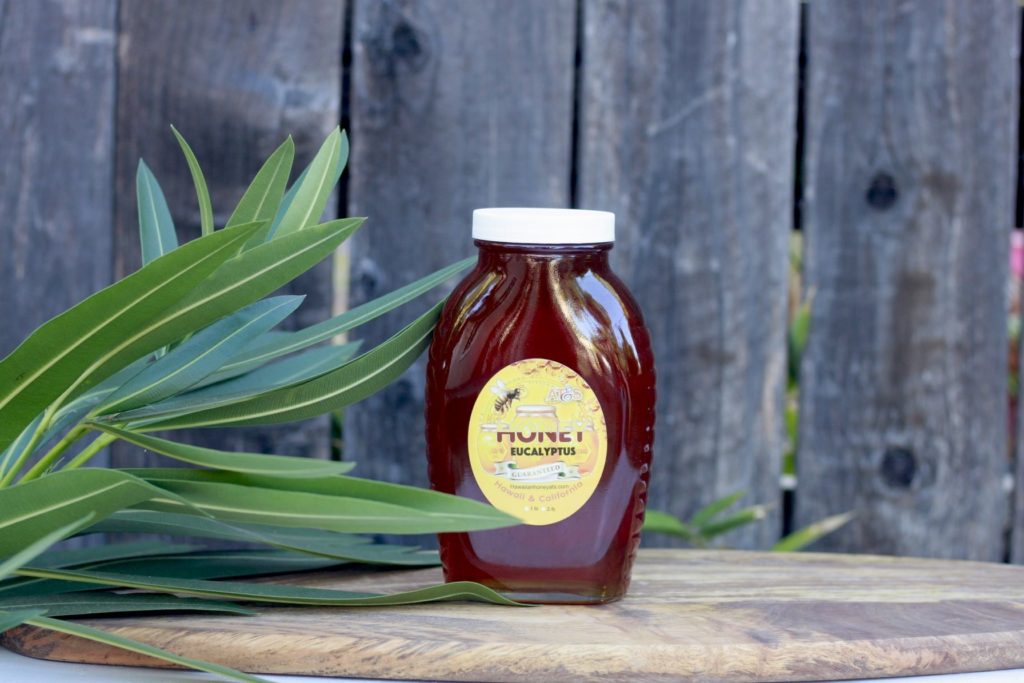
Originally from Australia but now produced extensively in California, eucalyptus honey smells and tastes just like you’d expect: distinctively herbal and somewhat medicinal, with a hint of menthol. Its color can vary depending on the tree or shrub from which the honey is harvested. It’s a great choice in fighting inflammation, it help heal wounds – and just as pungent eucalyptus cough drops help with congestion and coughs. It is always a good choice for those fighting colds or the flu.
Dandelion Honey
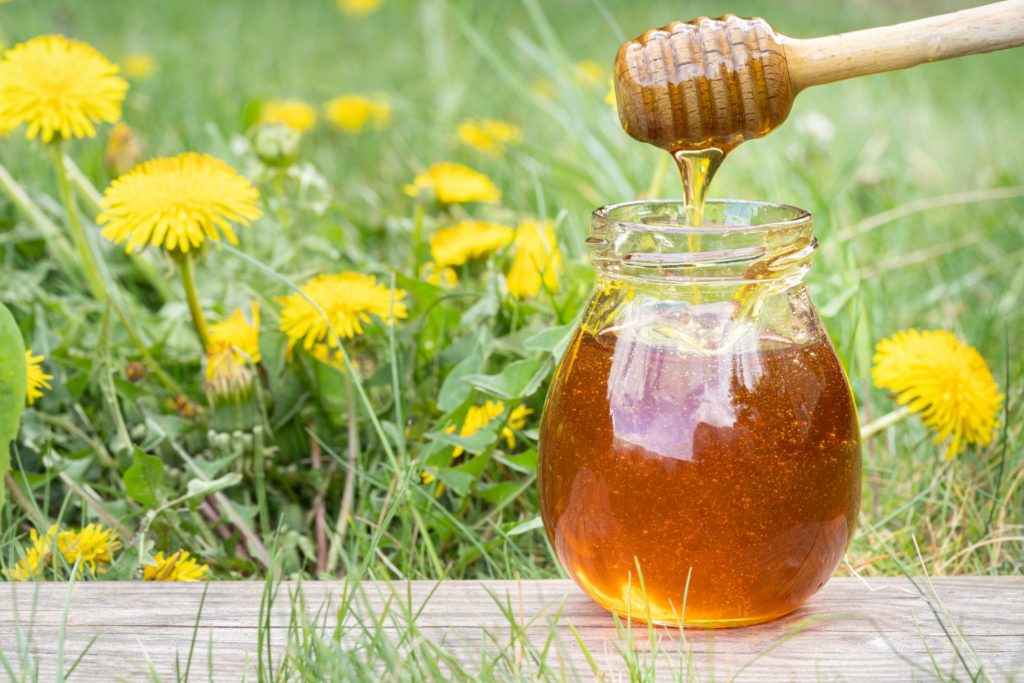
You won’t find dandelion honey in many stores, because not much of it is harvested ( it is one of the first honeys produced each year, so many beekeepers leave it in the hive for the bees to feed on). This golden honey turns dark amber as it starts to form crystals; it’s fairly strong with some tang to it, with a delightful aroma of spring flowers. It also crystallizes quickly. Dandelion honey is known for boosting the immune system, as well as helping with bowel and gastrointestinal tract health.
Fireweed Honey
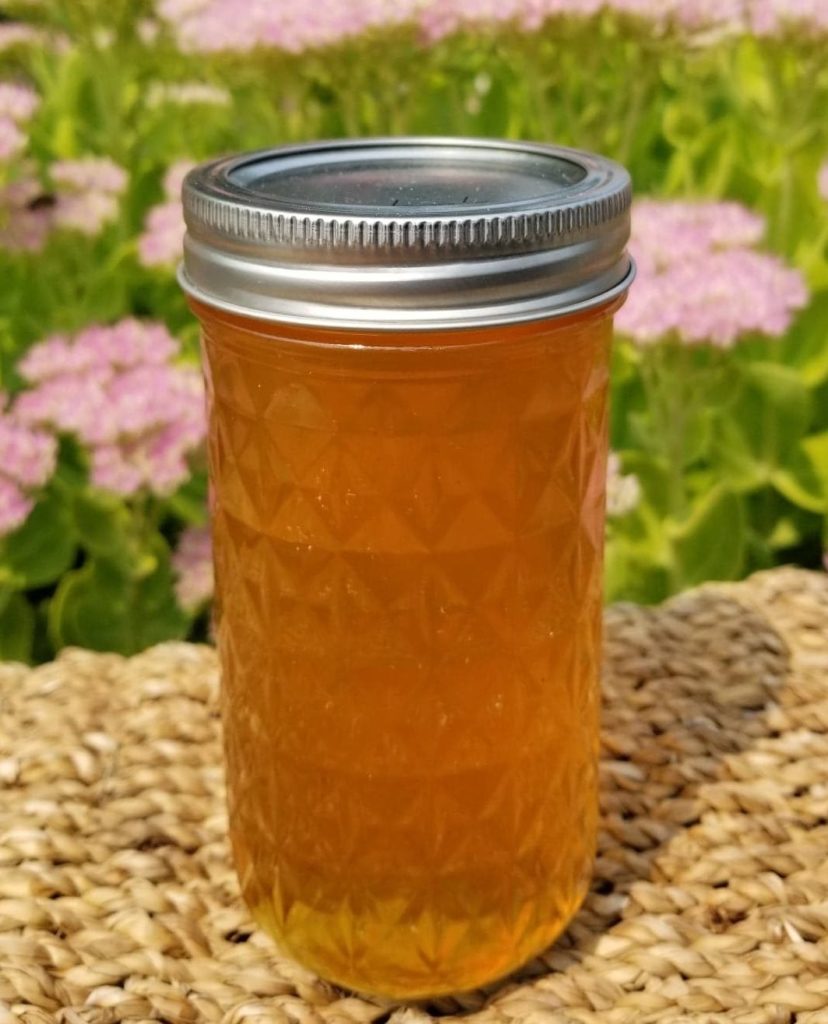
Beautiful pink flowers of fireweed plants that grow across the Pacific Northwest, Alaska, and Canada, are the beginning of Fireweed honey. The flowers, grow freely, and that’s makes the honey wildly available. Fireweed honey has a clean and pleasant aroma, and a taste that is smooth, sweet, and fruity with a delightful buttery finish. Its health benefits are similar to many of the other varieties we’ve mentioned, with noteworthy antibacterial properties. Fireweed honey is very effective in preventing the growth of bacteria that can cause streptococcal pneumonia and other types of staph infections. Its antibacterial properties can effectively treat wounds, and we’re starting to see it as a treatment for acne.
Goldenrod honey
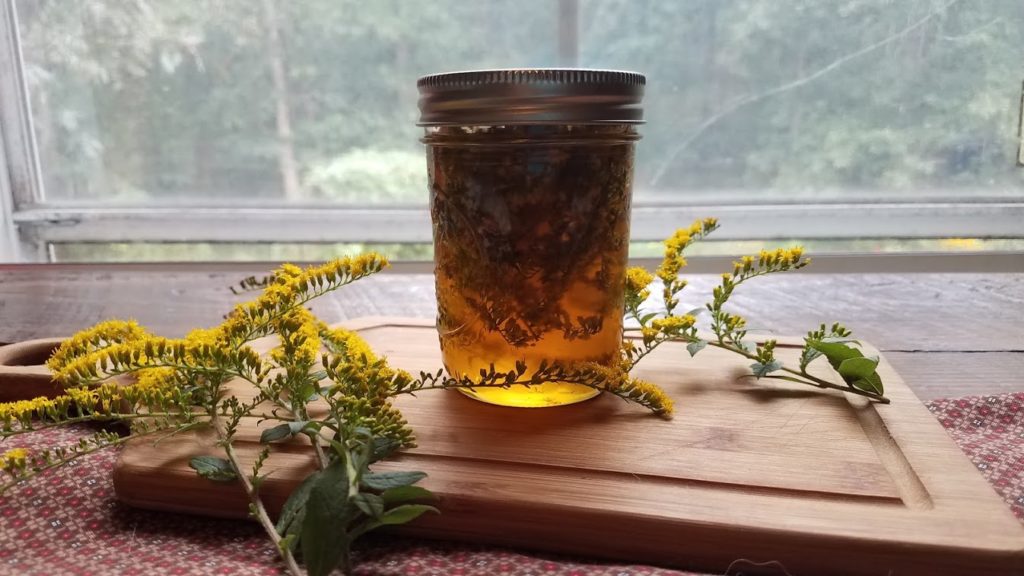
Goldenrod’s bloom time is four to six weeks, during a good year. So, it is a fantastic source of nutrition for the bees. Unfortunately, but it doesn’t make a fabulous honey. Some people enjoy it, but most find it dark and rather bitter. Goldenrod honey is quite sweet, with a slight sour note. You can also feel a certain bitterness in it, which makes it very well suited to various culinary applications. The specific taste comes from the goldenrod nectar, which is the basis for the production of this honey. Like other honeys, goldenrod flower honey has many health benefits. This product is primarily considered a natural, safe antibiotic. Effectively relieves inflammation, infections, and infections. It also works diaphoretic, so it is used for colds. It improves blood circulation and has a bactericidal effect.
**Interesting Fact: Goldenrod honey is one of the most demanding honeys. Contrary to other honeys, goldenrod honey needs to be stored at a slightly lower temperature due to its high biological activity.




I truly love your website.. Very nice colors & theme. Did you develop this amazing site yourself? Please reply back as I’m wanting to create my own personal blog and would like to learn where you got this from or what the theme is called. Many thanks!
yes, I did it all by myself… by the trials and mistakes …. this is one of the WordPress themes…
Hi. I definitely need this article. I used to eat two spoons of honey a day. And when I went to the doctor I was borderline hypoglycemia. So I stopped eating so much. But I really like it. So I’m looking for a good honey for me to buy in our local grocery store.
im happy my article might be helpful to you and your honey research
I’m excited to uncover this web site. I need to to thank you for your time due to this fantastic read!! I definitely savored every bit of it and I have you saved to fav to check out new information in your site.
Good article. You have collected a lot of information and written perfectly.
thank you .
Pretty section of content. I just stumbled upon your site and
in accession capital to assert that I acquire in fact enjoyed account your blog posts.
Any way I will be subscribing to your feeds and even I achievement
you access consistently quickly.
Woah! I’m really enjoying the template/theme of this blog.
It’s simple, yet effective. A lot of times it’s hard
to get that “perfect balance” between usability and appearance.
I must say you’ve done a great job with this. In addition, the blog loads extremely fast for me on Opera.
Excellent Blog!
Hey there, You have done a fantastic job. I will definitely digg it
and personally suggest to my friends. I’m confident they will be benefited from this
site.
What’s up to all, the contents present at this web page
are really amazing for people knowledge, well, keep up the nice work fellows.
Wow, amazing blog format! How long have you ever been blogging for?
you make running a blog look easy. The overall look of your web site is excellent, as well as the content material!